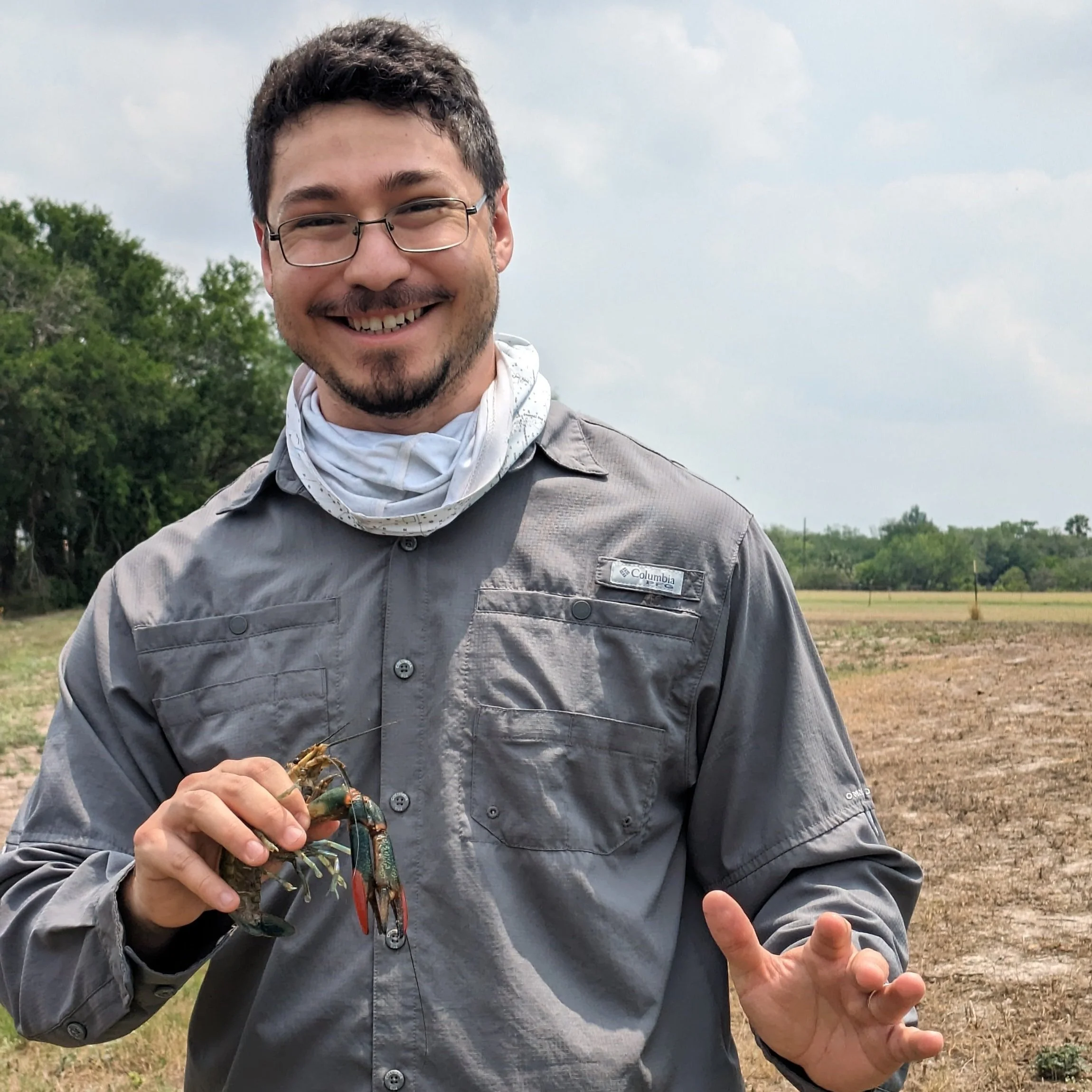Invasive Invaders: Unraveling the Mystery of the Australian Redclaw Crayfish in Texas
BROWNSVILLE, TEXAS – Nestled within the Rio Grande Valley's lush landscapes, the tranquil waters of a Brownsville resaca harbor a threat to the delicate ecological balance: the Australian Redclaw Crayfish (Cherax quadricarinatus). This invader, seemingly harmless, has the potential to significantly disrupt South Texas’s biodiversity.
Australian Redclaw Crayfish (Cherax quadricarinatus) found in a Brownsville Resaca.
Leading the charge against this ecological threat are The Texas Parks and Wildlife Department (TPWD), The University of Texas at Tyler (UT Tyler), and The University of Texas Rio Grande Valley (UTRGV).
The issue first came to light in 2013 when a citizen’s documentation of a female crayfish with eggs on iNaturalist brought this invasive species to attention. A 2022 preliminary study by UTRGV researchers discovered three specimens in Brownsville, prompting action from TPWD.
Dr. Archis Grubh, a TPWD Aquatic Biologist, identified three more Redclaw Crayfish in July 2022 across various local water bodies, further illustrating the invasive spread.
“We don’t know when these invasive crayfish were first introduced or how far they have spread, but we do know they can have a negative effect on local species and biodiversity,” Dr. Grubh explained in a TPWD press release published in August of 2022. He emphasized the importance of community reporting to better manage the species' spread.
Southern Research and Compliance LLC (SRC) President Eric Cantu (left) and TPWD Aquatic Biologist Dr. Archis Grubh (right) setting crayfish traps in a Brownsville Resaca.
In April 2024, during an ongoing joint study initiated by TPWD and UT Tyler to determine the distribution of the crayfish, Southern Research and Compliance LLC (SRC) President and Aquatic Biologist Eric Cantu, along with his wife and SRC co-founder Victoria Cantu, and UTRGV graduate student Christopher Austin, volunteered to join the effort, underscoring the community’s role in these initiatives. This collaborative effort resulted in the discovery of two additional Redclaw Crayfish in Brownsville, signaling an ongoing concern for the local environment.
Southern Research and Compliance LLC (SRC) President Eric Cantu setting up crayfish traps for targeted species Australian Redclaw Crayfish.
In Texas, the Australian Redclaw Crayfish, as well as other crayfish within the Parastacidae family, are considered prohibited exotic species. This means they cannot be bought, sold, or kept in aquariums by law. Additionally, it's against regulations to release these crayfish into public waterbodies.
Every report of a sighting, responsible pet ownership, and support for local conservation initiatives contributes significantly to preserving our natural heritage.
As the sun sets over the resacas, let it remind us of our shared duty to protect the ecosystems that sustain us. If you encounter the Australian Redclaw Crayfish, please send images and location details to aquaticinvasives@tpwd.texas.gov, and consider documenting your sighting on iNaturalist to aid global biodiversity monitoring.
Your vigilance is key to our collective effort to safeguard our ecosystems. Thank you for your dedication to preserving our natural world.
About the Authors:
Victoria Cantu
Co-founder of Southern Research and Compliance LLC (SRC)
M.S., Biology, The University of Texas Rio Grande Valley
References:
Texas Parks and Wildlife Department. (2022, August 11). Invasive Australian Redclaw Crayfish Present in Texas. Retrieved May 3, 2024, from https://tpwd.texas.gov/newsmedia/releases/?req=20220811a
Sanjar, A., Davis, D. R., & Kline, R. J. (2023). Evidence of an established population of Cherax quadricarinatus (von Martens, 1868) in south Texas, USA. BioInvasions Records, 12(1), 284–291. [https://doi.org/10.3391/bir.2023.12.1.24]





